Text
with Francesc Ruiz, A Room of One’s Own: Lily Indie Press. Busan Biennale 2020
youtube
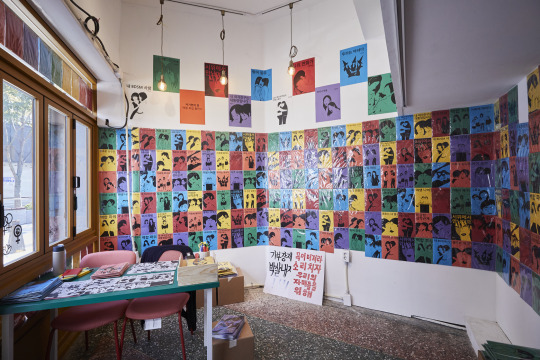
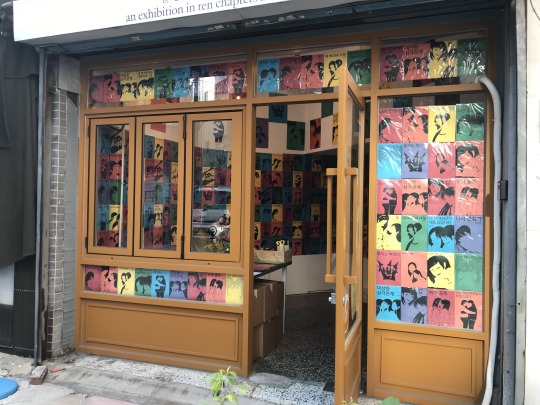
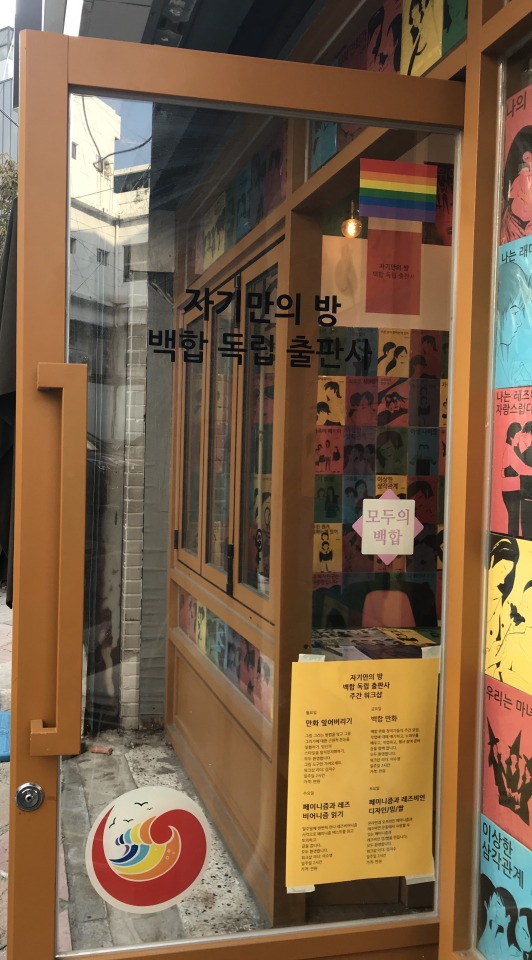
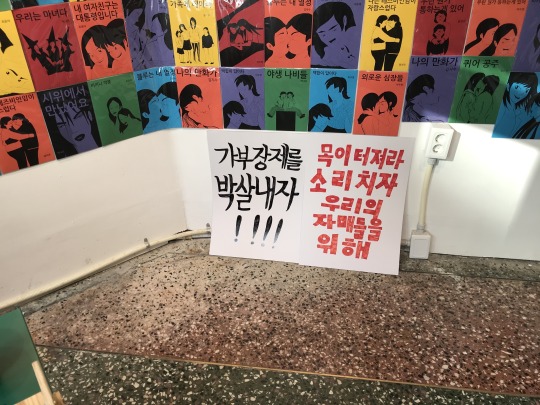
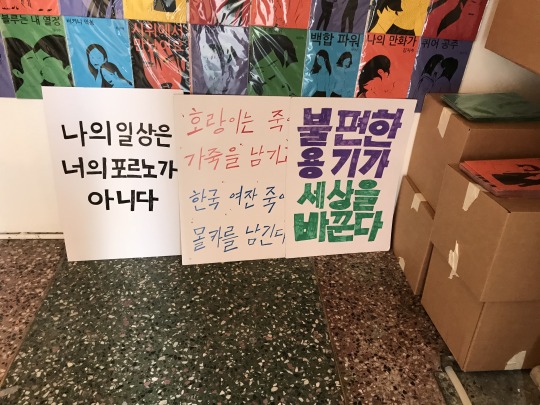


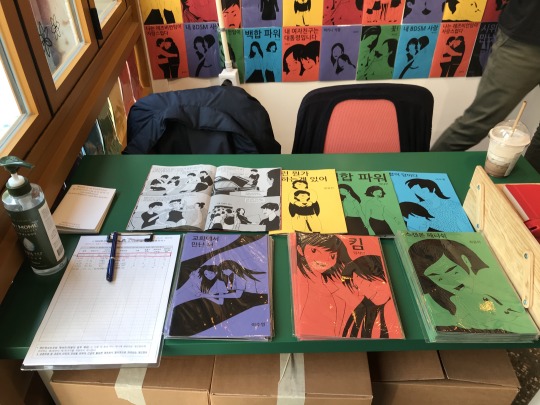
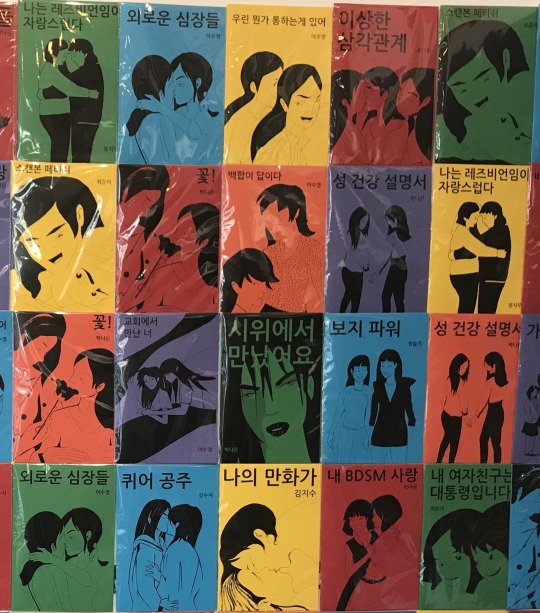

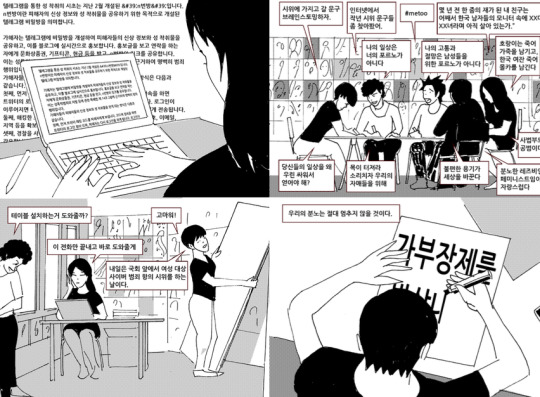
with Francesc Ruiz. A Room of One’s Own: Lily Indie Press. 2020. Installation. Busan Biennale. South Korea.
— Collaborated on research & worked on translation
Official Description from Busan Biennale 2020:
For the last twenty years, Francesc Ruiz has consistently developed and worked on projects that involve cartoons and comic strip cultures. It is not the traditional comic that serves a purpose of pure entertainment; Ruiz recognizes the comic book as aesthetic, structural, and intellectual substrate to look at and question the society and politics that surrounds him. Ruiz mirrors reality and reflects on sexuality, sexual fetishes, gender, identity, and LGTBIQ+ issues. Nothing is hidden, all sexual preferences are out in the open and displayed. Presenting his works as installations, comics, printed matter, and bookstores, Ruiz constantly looks for alternative ways of distributing the comics to disrupt regular systems. The awakening of historical sexual liberation movements can be found everywhere in his work, in which he generates a mash-up of genres, cultures, and historical references—from the Tijuana Bibles (porn parodies in comic format from 1930s to 60s) to Catecismos do Brasil (porn mini-comics from 1950s to 80s), from Italian Fumetti Erotici (erotic comicsfrom the mid-1960s to the 80s) to Japanese Yaoi (Boys Love manga genre created in the 1970s).
In 2010, Ruiz constructed a bookshop called *Gasworks Yaoi* at the exhibition space Gasworks in London. There he displayed work relating to the feminine subculture of Yaoi, which is a Japanese manga genre that depicts male to male romance and sex, all produced and consumed by women. Another example is Ruiz’s parasite comic bookstore installation in an already existing bookstore at the Momentum Biennial in Moss, Norway, in 2019. At House of Fun, Ruiz presented the subculture of alternative Hentai and explored radical sexual fetishes mainly focused on the male gaze, and made them available to the viewers. The alternative bookstore became a safe space to explore and share new ideas, sexual desires, and tested the limits of representation. Alternative distribution methods—by street venders, newsstands, hand-to-hand circulation—of printed matters are essential to Ruiz, because they are effective ways to share stories, make people aware of the city, and point to an alternative to main street consumerism. Ruiz challenges the existing architectural structures and constantly addresses individual, political, social, urban, and sexual norms. Ruiz creates spaces for subculture encounters where freedom of speech can be exercised, and where gender, sexuality, and identity can be shared and let loose.
프란체스크 루이즈, 〈자기만의 방: 백합 독립 출판〉, 2020. 부산 비엔날레. 대한민국
지난 20년간 프란체스크 루이즈는 카툰과 연재 만화 문화와 관련된 프로젝트들을 지속적으로 발전시켜 작업해왔다. 이것은 순수한 즐거움을 제공하는 전통적인 만화는 아니다. 루이즈는 더 나아가 만화책을 미학, 구조로서 그리고 그를 둘러싼 사회와 정치를 바라보며 질문을 던질 수 있는 지적인 기반으로서 만화의 형식을 빌려오고 작품을 제작한다. 프란체스크 루이즈는 현실을 거울처럼 비추며 섹슈얼리티, 성적 페티쉬, 젠더, 정체성, 그리고 LGBTIQ+ 이슈를 돌아보고자 한다. 숨겨져 있는 것은 없으며 모든 성적 선호는 드러나 열려 있고 전시된다. 그는 자신의 작업을 설치, 만화책, 인쇄물, 서점의 형태로 선보이며, 끊임없이 정상적 시스템을 분열시키기 위한 대안적인 방법을 찾고 있다. 프란체스크 루이즈의 작업 어디에서나 역사적 성 해방 운동이 준 깨달음을 찾아볼 수 있다. 그리고 그는 자신의 작업을 통해 여러 장르, 문화, 역사적 내용을 뒤섞는다. 이것은 ‘티후아나 바이블(Tijuana Bibles, 1930-60년대 만화에서 포르노 패러디 형식)’에서 ‘Catecismos do Brazil(1950-80년대의 소형 포르노 만화책)’까지, 이탈리아의 ‘푸메티 에로티치(Fumetti Erotici, 1960년대 중반에서80년대까지의 에로 만화책)’에서 일본의 ‘야오이(Yaoi, 1970년대에 생겨난 ‘보이즈 러브’ 장르 만화)’까지 이른다.
6 notes
·
View notes
Text
Affect* of Overload in Contemporary Women’s Comics

I wrote about Syvia Nickerson's Creation (2019), a meditation on the city and its inhabitants and how both shape each other, and Lala Albert's Seasonal Shift (2019), a collection of sci-fi comics that are more realistic than our realities for DAMN 75 Winter 2020 "Overload" issue.
I focused on their depiction of the affect* of contemporary society’s obsession with technological and economic development on our—especially women’s—lives. This affect is manifested as transformed bodies and leads to the identity crisis in both works.
(*Affect is a thing before emotion. Emotion has a name, but affect is nameless and ambivalent. Emotion is actual, but affect is virtual. According to Brian Massumi’s “The Anatomy of Affect”)
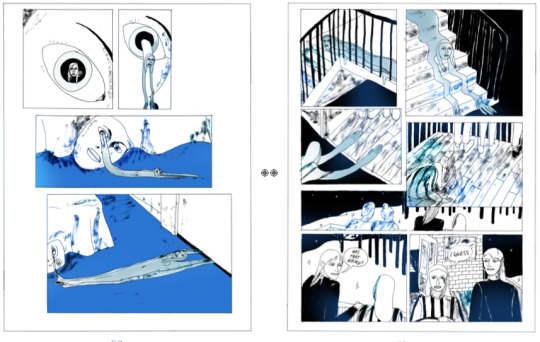
Lala Albert's Seasonal Shift
Finally, I suggested that comics, especially women’s comics like Creation and Seasonal Shift, could be the force for positive change. In her seminal essay A Cyborg Manifesto: Science, Technology, and Socialist-Feminism in the late 20th century, Donna Haraway proclaimed the power of women’s stories that subvert the realities of women as cyborgs in a society overloaded with an obsession for technological and economic development. Although cyborgs are born from “control on the planet [and] ... appropriation of women’s bodies in a masculinist orgy of war,” they have the power to undermine the misogynist world. For women, "Survival is the stakes", as Seasonal Shift and Creation show.
p.s. Of course, we could expand the last paragraph's thesis to include the intersectionality of race, sexuality, gender, nationality, etc.
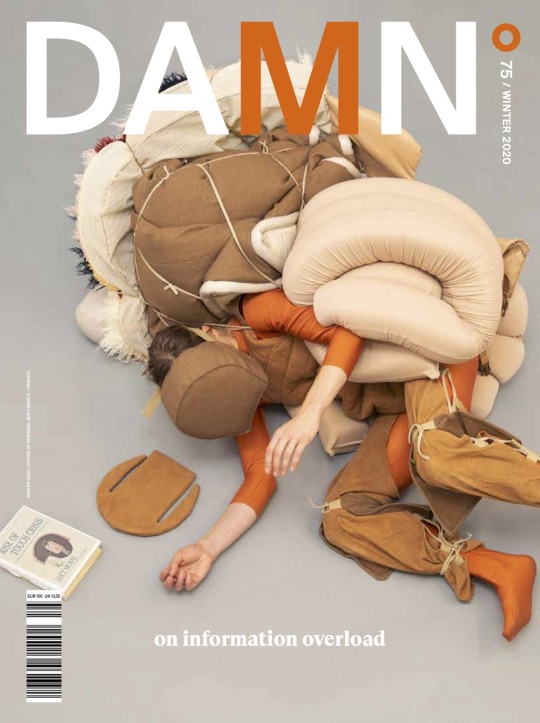
6 notes
·
View notes
Text
The 4PANEL Project — CAROUSEL 42
I guest edited The 4PANEL Project for CAROUSEL Magazine 42 (Winter 2019/20). Here they are, all from 4panel.ca:
Margaux Duseigneur

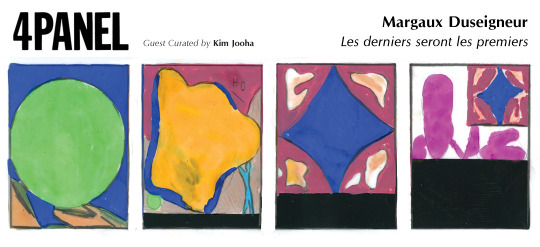
François Henninger

Laurence Lagier

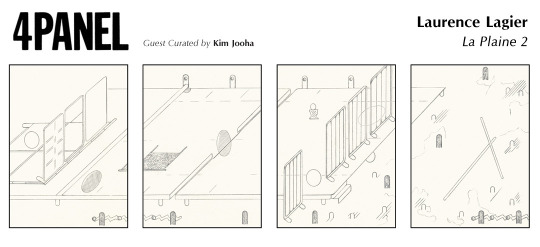
Lomé Lu

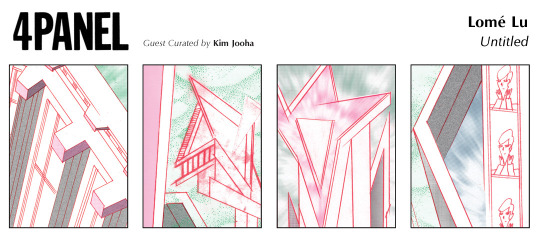
Manuel


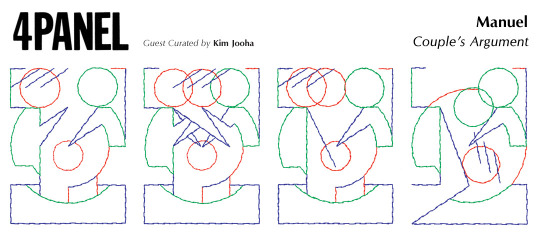
Caroline Sury

Huh Hyunjung
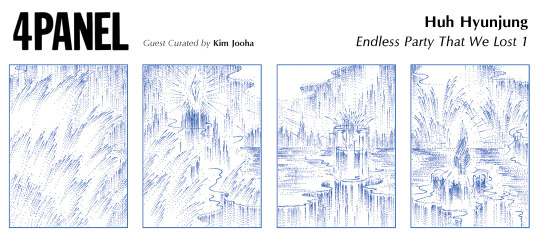

Jeong Wonkyo
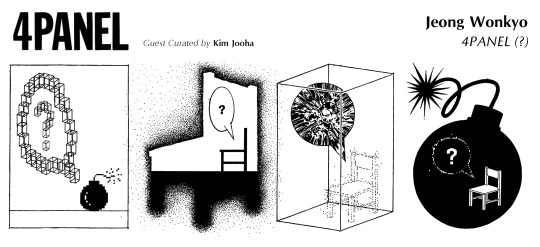
ooo
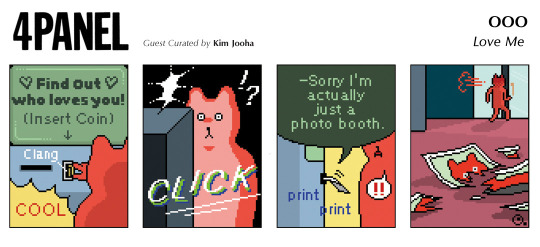

Rantan
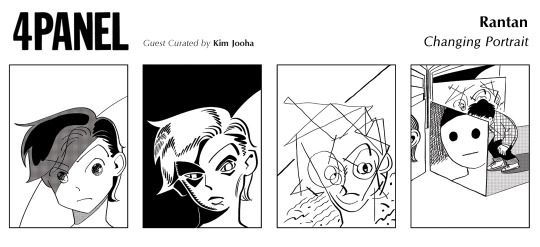
Woo Younsik
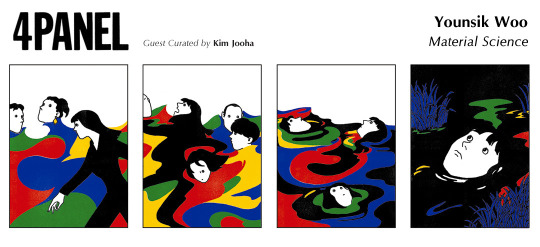
William Dereume

Andrea Lukic

Juli Majer

Aeon Mute

57 notes
·
View notes
Link
Counter Comics: like Counter Cinema, comics that strive to unravel the ideology behind comics.

Ilan Manouach ( one / two )

Stefanie Leinhos

Christmas in Prison by Conor Stechschulte

Barques by Vincent Fortemps
8 notes
·
View notes
Link

”Early Comics as Comics of Attraction: Society is Nix & Forgotten Fantasy and The Temple of Silence”, Best Comics of the Decade @ Solrad
We tend to read history as teleological. We view early comics as a precursor for later serialized narratives and/or character focused comic strips. We think of avant-garde (experimental and formal) and narrative (and/or character) focused work as a dichotomy. We look for exceptional genii like Little Nemo in Slumberland’s Winsor McCay and The Kinder-Kids’s Lyonel Feininger. These gorgeous reprints show that we were wrong.
A lot of early comics exploited the introduction of colours on the large newspaper pages. Indeed, that was why comics were born in the first place. A lot of early comics experimented with the formal qualities of comics, too. Since it was the beginning of the new medium, there were fast turnouts, therefore low risk, and there was no set formula. There was also a lot of influence from other visual arts.
In Cinema of Attractions: Early Film, Its Spectator and the Avant-Garde, Tom Gunning suggests that early cinema was not a precursor of later narrative cinema, but its own cinema of attraction as a new medium. These reprints show that there were comics of attraction as well.
14 notes
·
View notes
Link
“Against the List”
Lale Westvind’s Comics of the Visceral
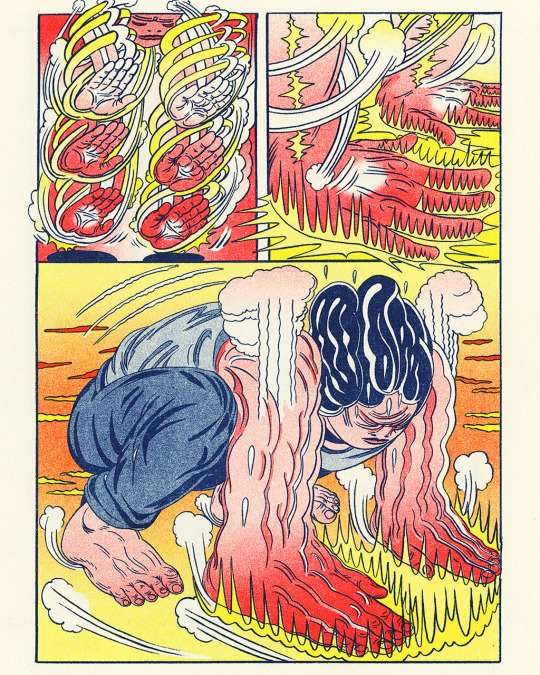
Jillian Tamaki: the Artist of the Decade
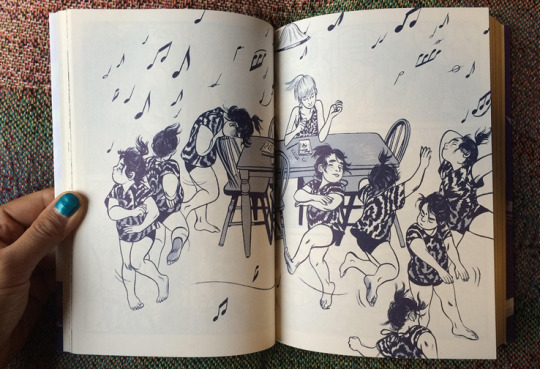
Patrick Kyle’s Navigating Space Comics

Ilan Manouach’s Counter Comics


Francesc Ruiz: Subverting Low Art of Comics


Deskilled Comics of Mushbuh and Char Esme & Ben Mendelewicz
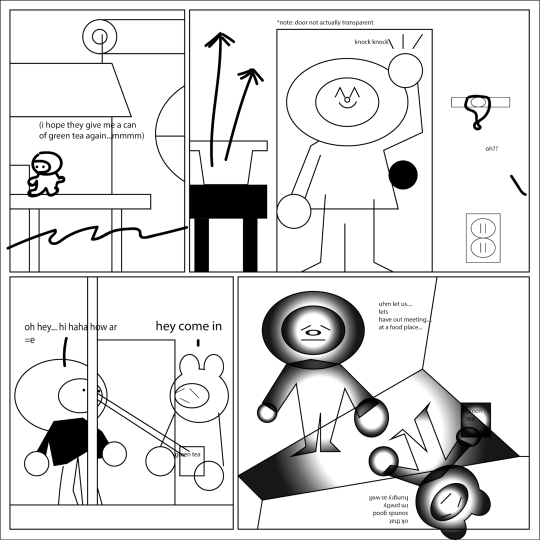
Mushbuh

Char Esme

Ben Mendelewicz
Gina Wynbrandt: Funny Ugly Girl Comics in the Post-Digital Age
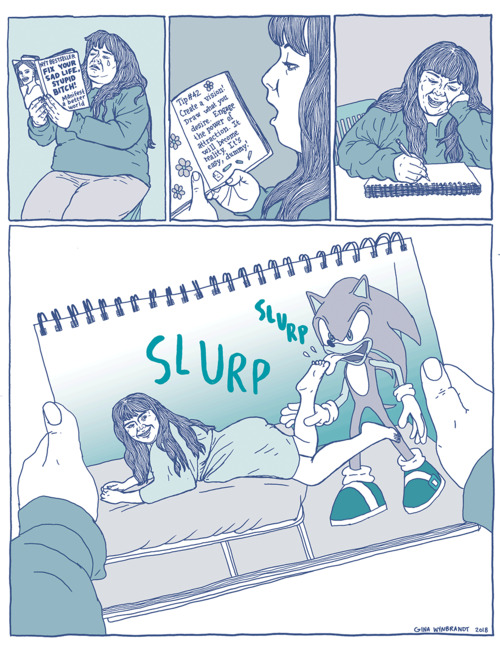
Aidan Koch’s Negative Symbolic Space
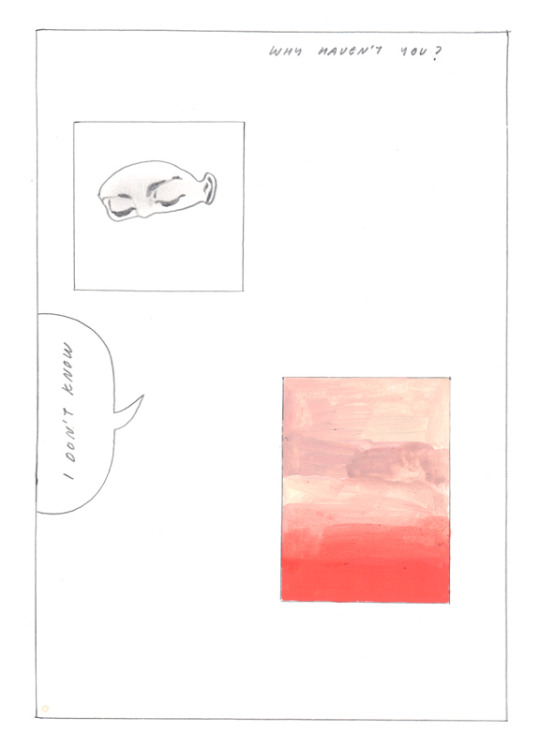
Margot Ferrick’s Comics of Affect
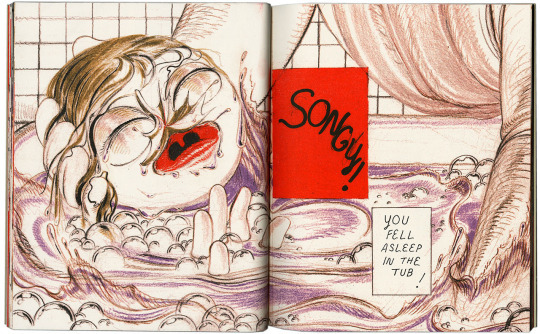
Tillie Walden: Dream of Queer Girl Popular Culture Coming True
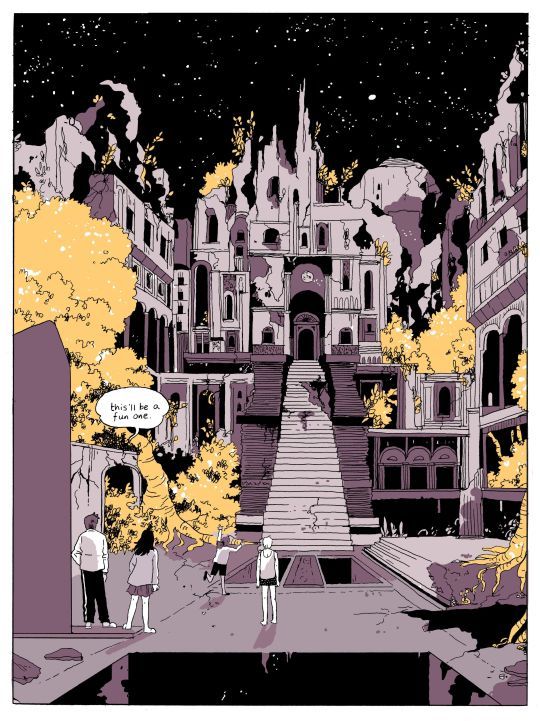
Aurélie William Levaux’s Embroidery Comics

Spatiality of Rantan’s Unruly Women
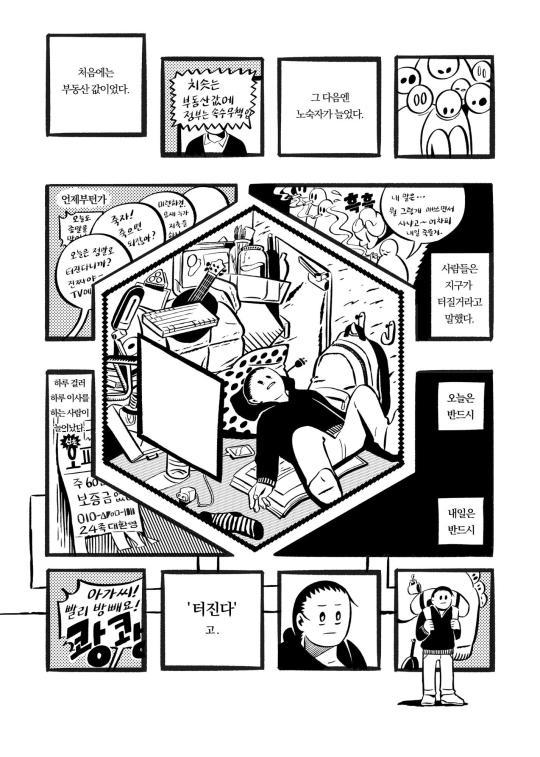
Early Comics as Comics of Attraction: Society is Nix & Forgotten Fantasy and The Temple of Silence
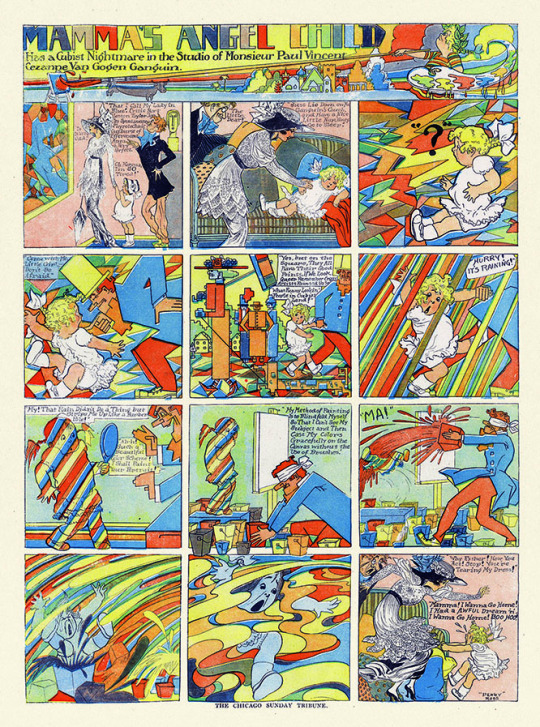
Reprints of Women’s Comics: (Re)publishing is the Act of (Re)writing History

Julie Doucet, The Complete Dirty Plotte (2018)
Fiona Smyth, Somnambulance (2018)
Aline Kominsky-Crumb, Love That Bunch (2018)
Jenny Zervakis, The Complete Strange Growths: 1991-1997 (2017)
Katerine Collins, The Collected Neil the Horse (2017)
Nicole Claveloux, The Green Hand and Other Stories (2017)
Sullen Rocca (2016)
The Complete Wimmen’s Comix (2016)
Dame Darcy, The Meat Cake Bible (2016)
Sylvie Rancourt, Melody: Story of a Nude Dancer (2015)
M.K. Brown, Stranger Than Life: Cartoons and Comics 1970-2013 (2014)
Dorothy Iannone: You Who Read Me with Passion Now Must Forever Be My Friends (2014)
Diane Noomin, Glitz-2-Go (2012)
Tarpe Mills, Miss Fury: Sensational Sundays (2011)
It is Almost That: A Collection of Image + Text Work by Women Artists & Writers (2011)
이진경, 사춘기 (2017), & more.
Super-structure: the Anthology of the Decade

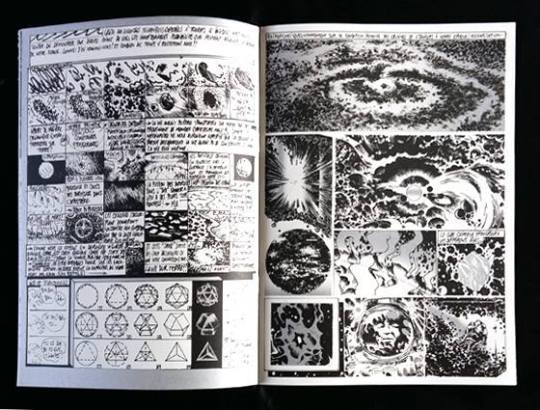
38 notes
·
View notes
Link
I will expound on some ideas I introduced in my Best Comics of the Decade list in the following series of posts.
(Re)publishing is the act of writing history. While the reprint renaissance began in the 00s, it is only in this decade that several prominent women cartoonists’ works got reprinted. Even then, there are glaring omissions ... For example, most of the 70s female Underground Comix that reflected not only the gross misogyny in the field but also the wider cultural influence of Women’s Liberation, or the second wave of feminism, are not reprinted. A lot of women-only anthologies of the 90s that were influenced by the contemporaneous Riot Grrrl and zine culture, or the third wave feminism, are not written in comics history. ... The history of comics is not the objective truth. We are (re) writing the history every minute ...
— "Reprints of Women Artists: (Re)publishing is the Act of Writing a History", Best Comics of the Decade @ Solrad
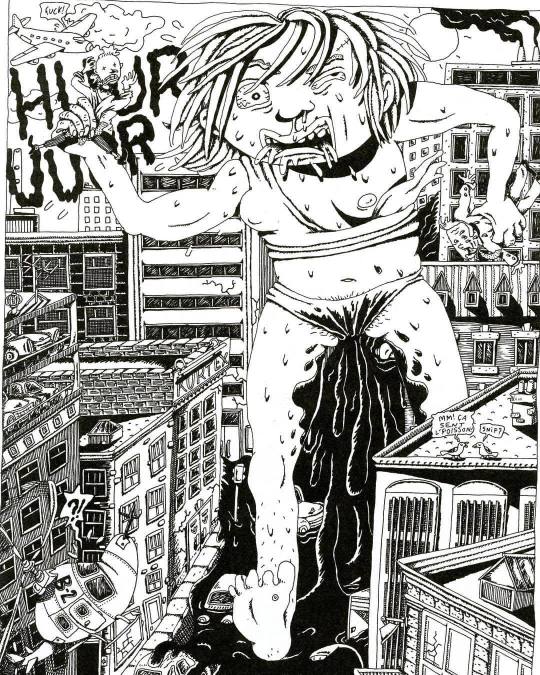
Julie Doucet, The Complete Dirty Plotte. Drawn & Quarterly (2018)

Fiona Smyth, Somnambulance. Koyama Press (2018)
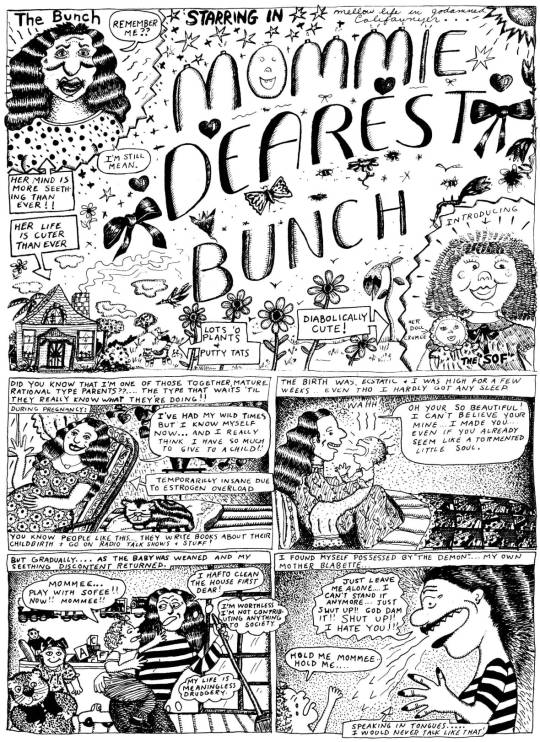
Aline Kominsky-Crumb, Love That Bunch. Drawn & Quarterly (2018)
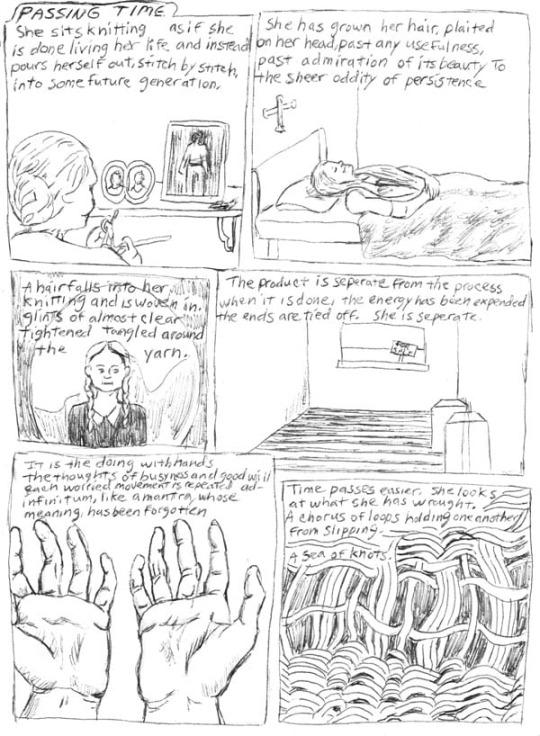
Jenny Zervakis, The Complete Strange Growths: 1991-1997. Spit and a Half (2017)

Katerine Collins, The Collected Neil the Horse. Conundrum Press (2017)

Nicole Claveloux, The Green Hand and Other Stories. New York Review Comics (2017)

Sullen Rocca (2016)
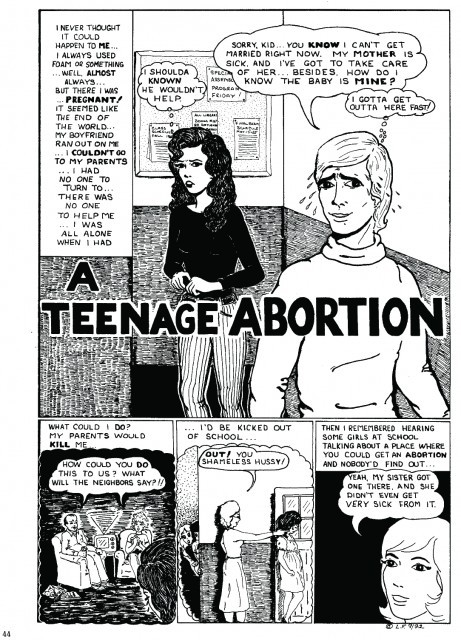
The Complete Wimmen’s Comix. Fantagraphics (2016)
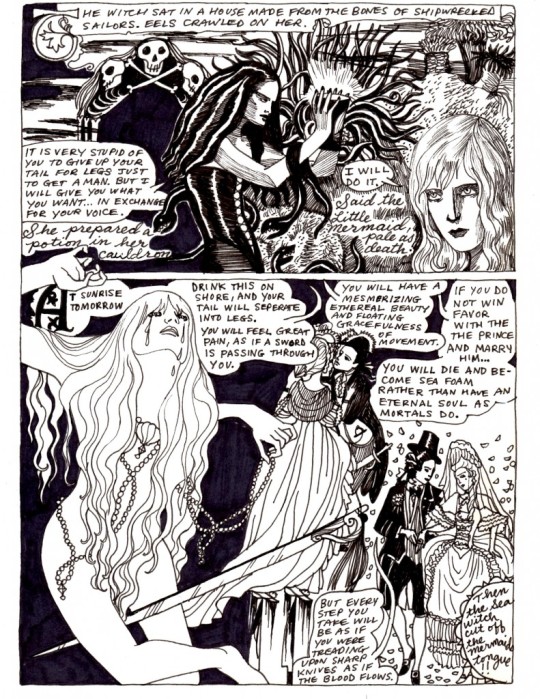
Dame Darcy, The Meat Cake Bible. Fantagraphics (2016)
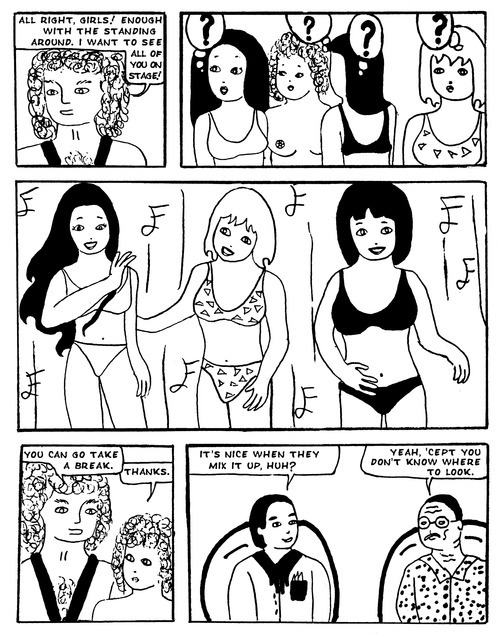
Sylvie Rancourt, Melody: Story of a Nude Dancer. Drawn & Quarterly (2015)
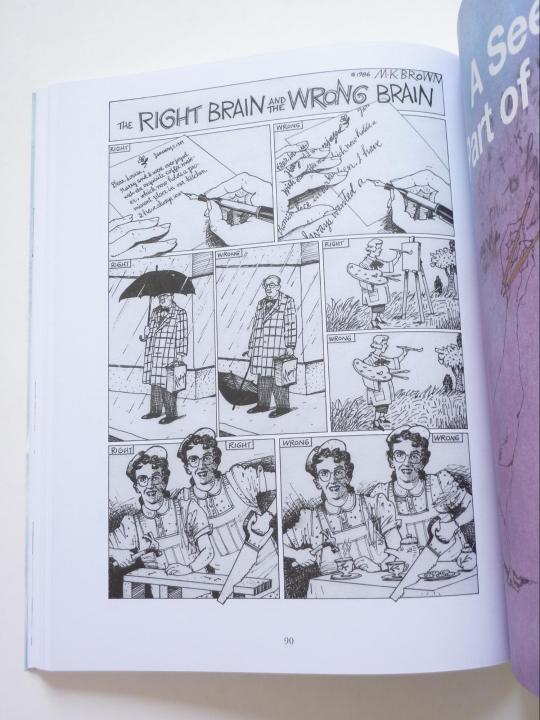
M.K. Brown, Stranger Than Life: Cartoons and Comics 1970-2013. Fantagraphics (2014)

Dorothy Iannone: You Who Read Me with Passion Now Must Forever Be My Friends. Siglio Press (2014)
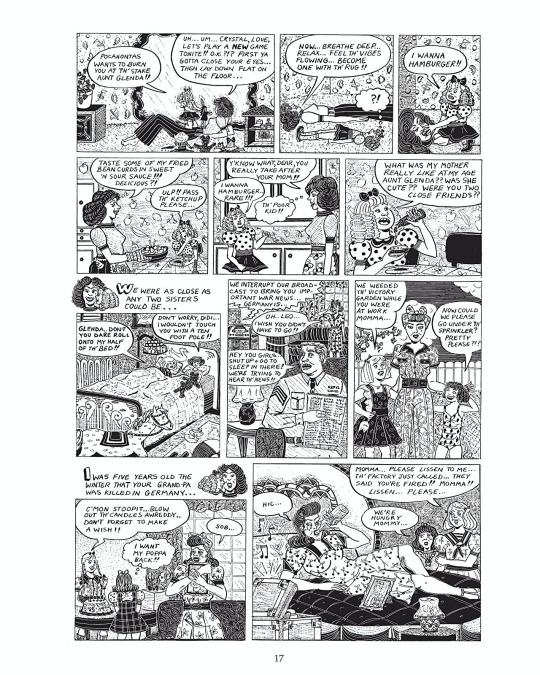
Diane Noomin, Glitz-2-Go. Fantagraphics (2012)
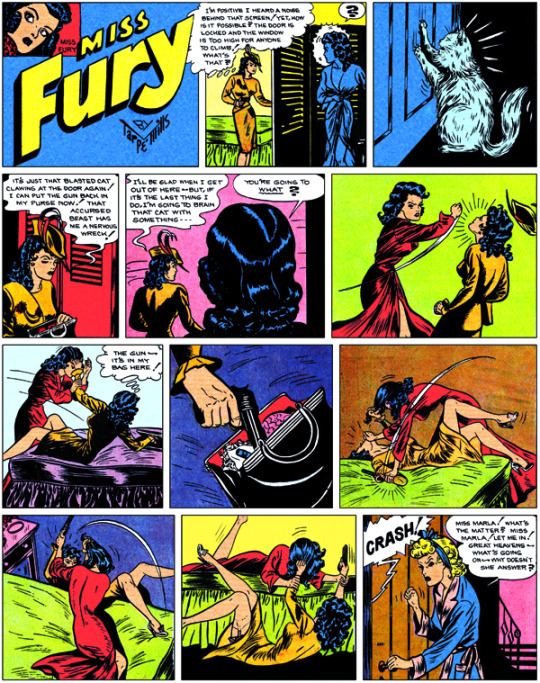
Tarpe Mills, Miss Fury: Sensational Sundays. IDW (2011)

It is Almost That: A Collection of Image + Text Work by Women Artists & Writers. Siglio Press (2011)
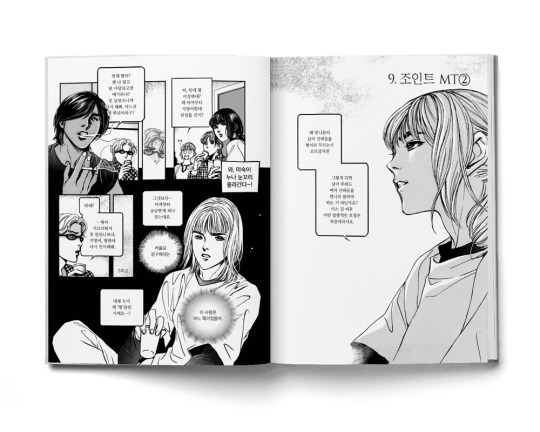
이진경, 사춘기, YOUR-MIND (2017)
#fiona smyth#julie doucet#tarpe mills#aline kolinsky-crumb#diane noomin#dorothy iannone#suellen rocca#mk brown#feminism#이진경#sylvie rancourt#dame darcy#Nicole Claveloux#Katerine Collins#Jenny Zervakis
17 notes
·
View notes
Text
(Canadian) Futures of Comics at Fumetto 2019

At Fumetto International Comic Festival 2019 in Luzern, Switzerland, I installed an exhibition / public library of Canadian comics; held four talks with reading and discussion sessions; and gave a talk at the symposium. It was part of Futures of Comics, one of ten main programmes of the festival, directed by Ilan Manouach; and curated by Manouach and Jana Jakoubek, the festival artistic director. Francesc Ruiz, Aarthi Parthasarathy, Guillaume Dumora, and Josh O’Neil also took part in the edition of Futures of Comics. The Phrontistery hosted the programme.
Talks
“Appropriation / Collage / Comics: From Sources to Subjects”
“Notes on Deskilled/Ugly Comics”
“Feminist Critiques of Comics Histor(iograph)y”
“On Trans/National Comics: the Canadian Case”
“An Elegy For Comics”. Futures of Comics Symposium.
List of Canadian comics exhibited:
Hot Potatoe by Marc Bell
Undocumented by Tings Chak
Hellberta by Michael Comeau
Rudy by Mark Connery, edited by Marc Bell
Leaving Richard’s Valley by Michael DeForge
REAKER UNTLD IV by DDOOGG
Carpet Sweeper Tales by Julie Doucet
Fluorescent Mud by Eli Howey
Climb-ing Mushrooms Fabric Zine by Ginette Lapalme
Meow Means Hi by Ginette Lapalme, Mark Connery, and Zuzu Knew
Roaming Foliage by Patrick Kyle
Hey, I don’t mean to be condescending or anything, but we’re friends, you don’t have to be afraid of me by Victor Martins
Sprawling Heart by Sab Meynert
Flash Marks by Carel Moiseiwistch
310,310 and 978-91-87325-43-4 by Mushbuh
Nexus by Aeon Mute
Red Rainbow and It’s Time to Wake Up Now by Hue Nguyen
Somnambulance by Fiona Smyth
Boundless by Jillian Tamaki
The Palace of Champions by Henriette Valium
Condo Heartbreak Disco by Eric Kostiuk Williams
Magical Beatdown by Jenn Woodall
Seasons of Butterfly by Kendra Yee
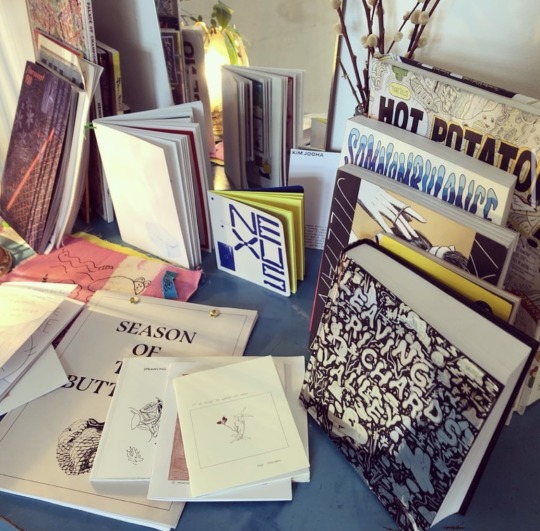


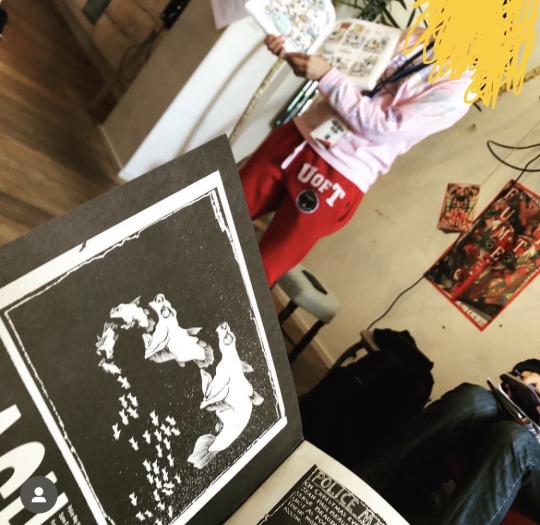
Above pictures are from @thephrontisteryluzern on instagram
7 notes
·
View notes
Text
Comics as the Language of Post-Digital: Deskilled Comics and Meme as Vernacular Comics
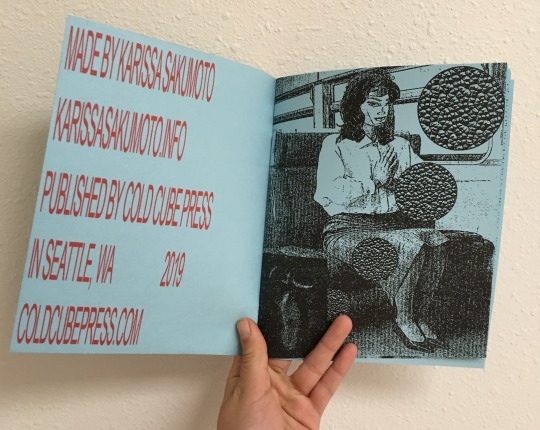
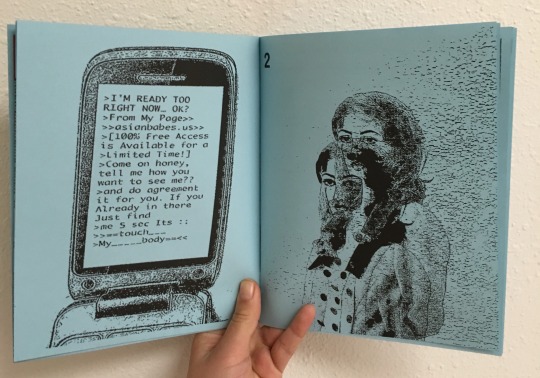
Karissa Sakumoto, Endman (2019)

Mushbuh, 310,310 (2017)
I have a new essay for LAAB Magazine #4: This Was Your Life!, titled Comics as the Language of Post-Digital: Deskilled Comics and Meme as Vernacular Comics. LAAB Magazine is one of my favourite space for comics discourse and it was an honour to be asked to participate in.
This is one of my favourite essays I have written. It is about Deskilled Comics, intentionally poorly drawn comics, and:
Deskilled Comics and their characteristics in both art comics world and broader general post-digital visual culture
Why Deskilled Comics are preeminent forms of post-digital visual culture
Paper Rad as the precedent of everything post-digital
Meme as Vernacular Comics of post-digital
Comics as the language of post-digital: memes, emojis, Instagram, etc.
Now comics are much bigger than anyone has ever imagined and we need to ask different questions. For example:
Meme makes “The Death of the Author” a reality and eliminates the distinction between original and reproduction. What does it mean to make art when being original and/or an artist means nothing?
Meme and Deskilled Comics are a kind of camp for post-digital age. Their mechanism of humour of distancing makes them easy tools for radicalization. What does it imply for comics and comics community that comics are used to kill people?
and more. Get LAAB Magazine #4: This Was Your Life! to read the essay.

14 notes
·
View notes
Text
Ilan Manouach’s Conceptual Comics

I have a new essay in The Comics Journal 304 about Ilan Manouach’s conceptual comics: Katz (2011) and MetaKatz (2011) from Maus and MetaMaus by Art Spiegelman,
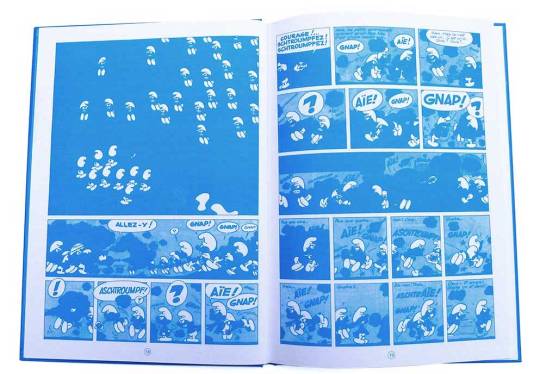
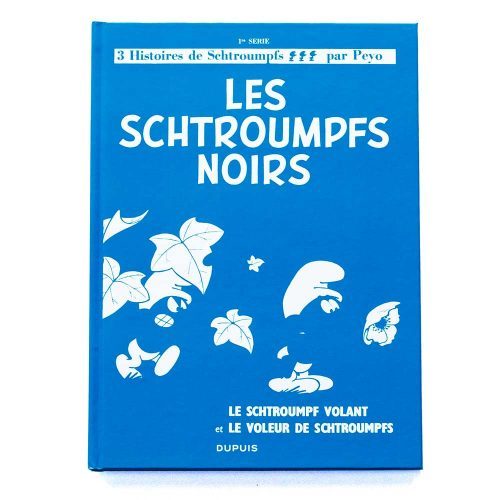
Noirs (2014) from Les Schtroumpfs Noirs by Peyo, Tintin Akei Kongo (2015) from Tintin au Congo by Herge,
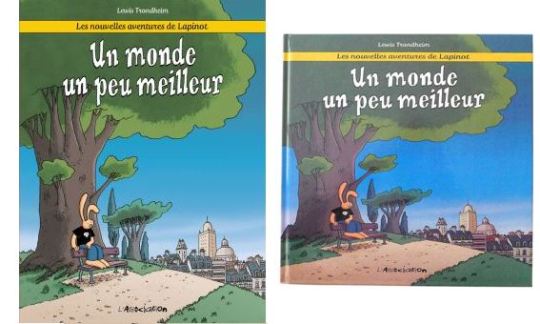
Un monde un peu meilleur (2018) from Un monde un peu meilleur by Lewis Trondheim.
Manouach’s appropriation works disclose the ideologies behind mainstream and “alternative” comics, even seemingly apolitical features like technology (color or formatting) or style of comics.
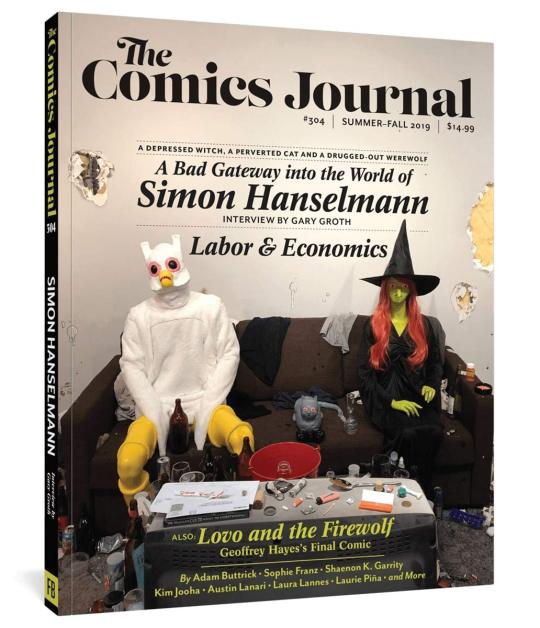
3 notes
·
View notes
Text
Vincent Fortemps: Comic Sculptures
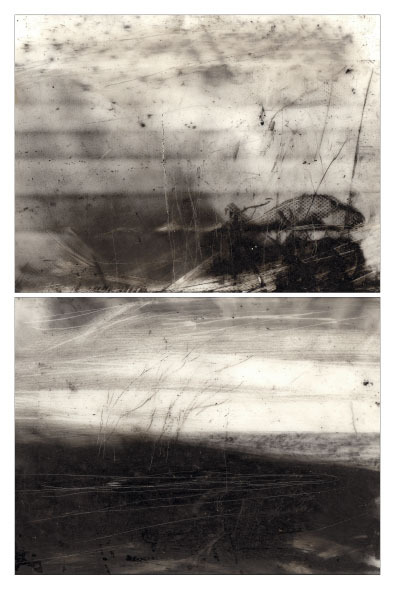
I wrote about Vincent Fortemps’ Barques for DAMN°72:
Vincent Fortemps says that his practice is more of a sculpture than a drawing. Fortemps draws on both sides of transparent rhodoid sheet with a black lithographic crayon and scratches the sheet with a knife.
Barques (2007) is the shortest and smallest among his oeuvre, but shows Fortemps’ singular attention to the physical materiality and ontology of images in the most poetic way.
Barques reveals the illusion of representation in comics – continuity, time, movement, original material – while appreciating the ambiguity and diversity it creates.
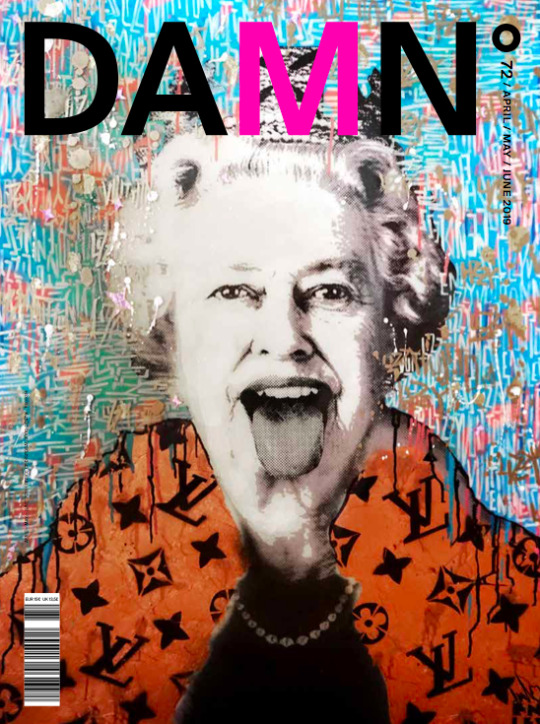
8 notes
·
View notes
Text
Ilan Manouach’s Shapereader: The Visual Question
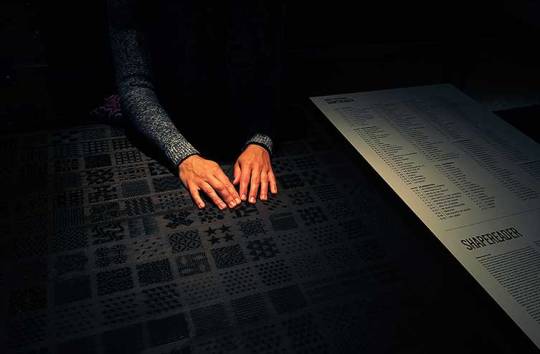
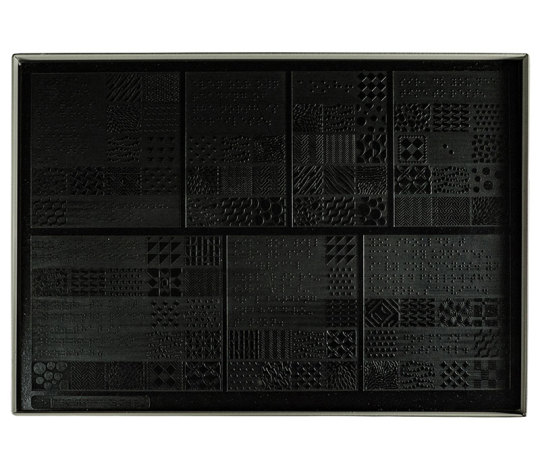
My new essay "Ilan Manouach’s Shapereader: The Visual Question" is out on DAMN°, a Belgian quarterly art & design magazine, issue 71:
Shapereader is a tactile comic for the visually impaired. It exposes the inherent limitation of visual media/art: it excludes blind people. Shapereader also asks: what is the ‘visual’ in visual media/art if we can perceive it without seeing it? Shapereader challenges the privilege of the eye by showing that there is no pure visual perception and media/art.
Shapereader is Manouach’s call and action for more diverse and inclusive aesthetic experiences, and the imagination and realization of such a possibility.
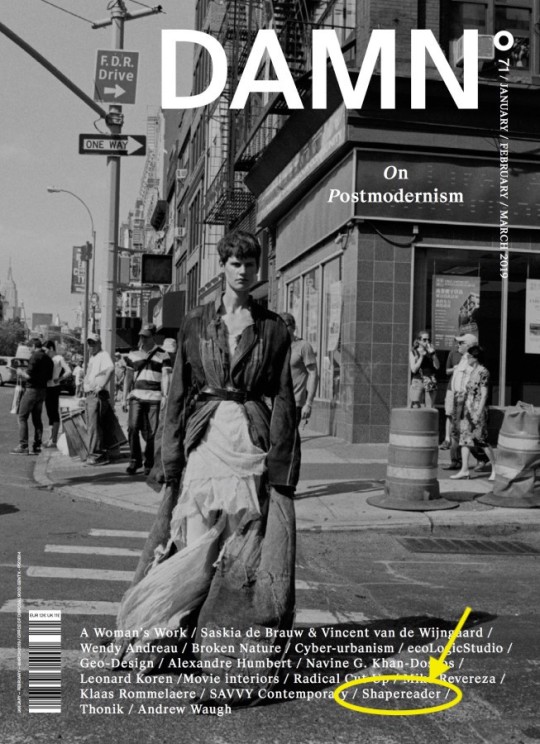
21 notes
·
View notes
Text
Vanishing Perspective: Alexis Beauclair Interview
Alexis Beauclair is one of the best artists in contemporary European art comics. Beauclair’s immaculate minimalist works are the epitome of French Structural Comics. I edited his first collection Vanishing Perspective (2dcloud, 2018) and interviewed him for the publication.
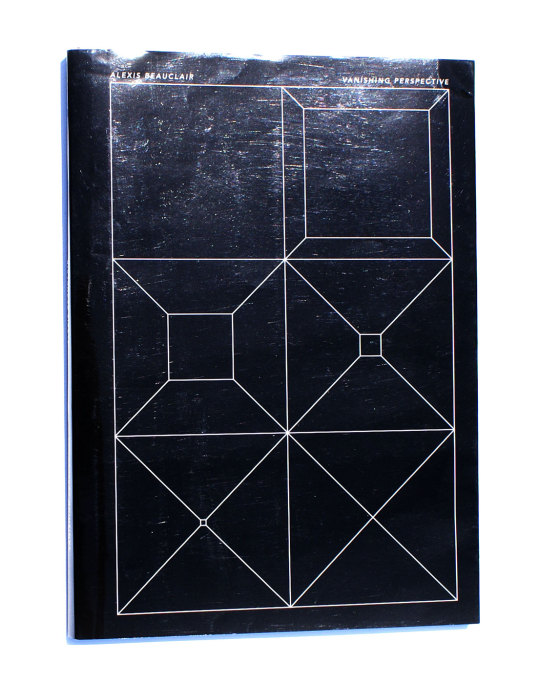
How would you describe, define, or categorize the comics you make? Abstract comics?
I would like to say minimalism. Most of the time I try to refine as much as possible, to deal with the simplest parameters, with the pure mechanics of the comics form and to conduct experiments.
But I keep a certain classic comics codes: there are panels, and the reading is linear (even if I like to play with the entire page). I feel what I’m doing is more like an archeological search for the very roots of this sequential language.
I like when things are between the abstract and the figurative and when figures come to surface to play with this in-between.Humans are designed (and/or acculturated?) to see signs, to try to decrypt reality so with just a little bit of information they can link things and understand some logic. I’m fascinated by this process and love to question it.
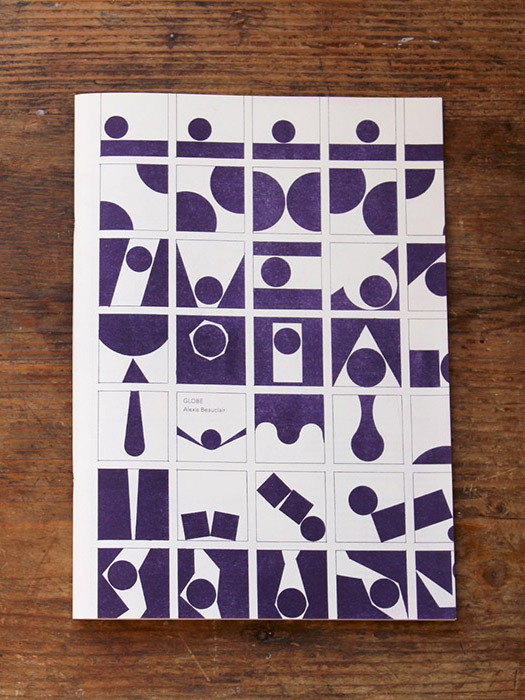
Globe, 2008
What inspired you to develop a “minimalist“ style? Did you know previous so-called “abstract comics“ when you started yours?
No, I didn’t know the few experiments that had been done at the time, when I started my first minimalist project (Globe, 2008). I was thinking, “It’s unbelievable that nobody has ever done it yet! Why did the comics form wait so long to liberate itself from literature or illustration“ I dived into it intuitively. My first and biggest inspirations are maybe (adventures) comics in general that I had read, like Spirou or Tintin. For me, it’s about movement. Each comic book is a rush forward; the reader is led by the character walking, running, jumping, falling (ok they are also talking) within landscapes. And this movement doesn’t exist on its own like in the cinema. The movement is created by reading. And reading is a movement.
So I try to find what kind of energy drives comics beneath all the artifices (characters, stories, and anecdotes). Distill the comic to the maximum to reach its essence: movement.
What I love is composing images with shapes and lines so that the reader can decrypt these signs and imagine or feel the movement. Nothing exists without the reader; s/he is active; s/he projects her or his own experience into the life of movement; s/he applies physical laws to fixed images printed on paper.
I’m enchanted by this mental exercise. To associate images, to combine signs, to question them and drive drawings toward abstraction as if they were an imaginary language.

Labyrinth, 2014
The comics in this collection were originally published independently. What made you collect them together?
This collection focuses on my self-published line drawing-based minimalist comics. These comics are part of one body of research. The collection is in chronological order. It progresses from minimal figuration to non-figurative imagery, almost abstraction!


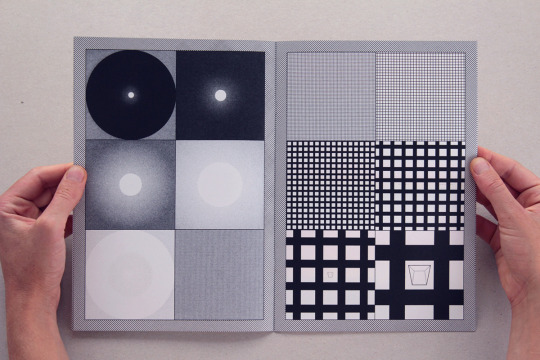
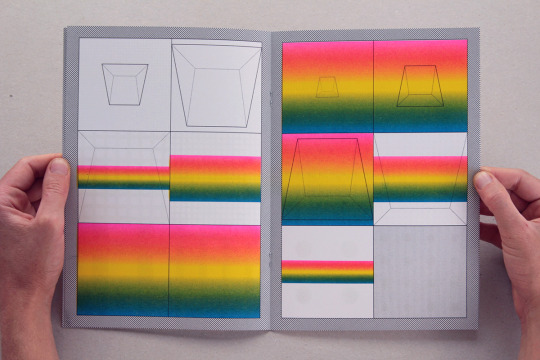

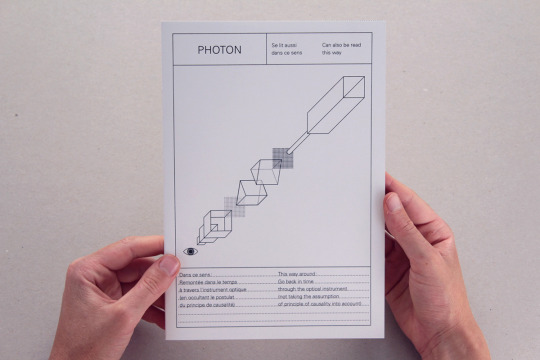
Photon, 2014
Photon is a simple progress through a corridor-like object; Labyrinth is just a minimal corridor of lines but with disorienting turns; Vanishing Perspective starts with minimal perspective, vanishes to just moving lines, and evokes minimal stories; and Sol is about the movement of multiples lines, a hypnotic end.
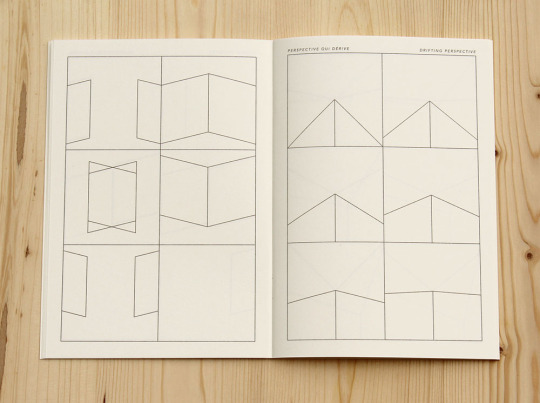
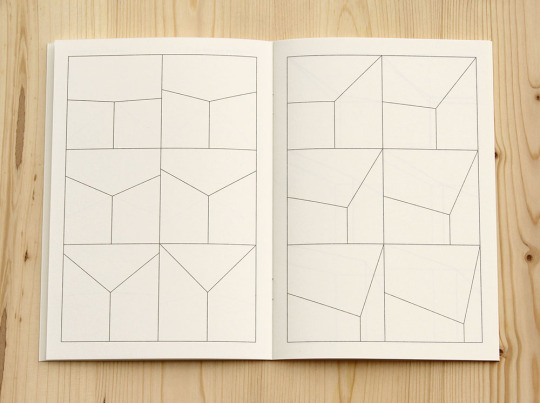
Vanishing Perspective, 2015
Sol is the most recent work from the collection. You mentioned that it’s an homage to Sol LeWitt. Why Sol LeWitt?
I was a Sol LeWitt fan, but I hadn’t seen his wall drawings in exhibition — only in books — before I saw them at MASS MoCA two years ago. The show blew my mind.
As I like to experiment with simple drawings elements I wanted to experiment with multiple lines. So when I got back to France, I decided to do a tribute to him, using his famous patterns.
I did a simple thing to adapt it to comic form. I changed the order of LeWitt’s patterns (vertical, horizontal, diagonal rising, diagonal descending). My goal was to create movement as lines rotated (vertical, diagonal rising, horizontal, diagonal descending = clockwise). That is the cover page.
Next, I played with the possibilities offered by these patterns and also with geometry. For example, when vertical lines turn on a diagonal axis, the lines become closer to each other.
So this is ideas of one or a few pages. The reader is invited to decrypt the rules involved, or just feel movement, or optical sensations.

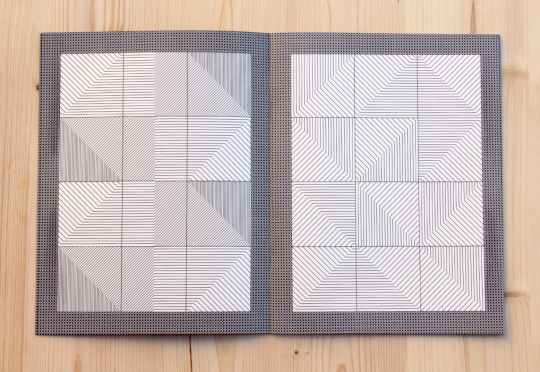
Sol, 2016
31 notes
·
View notes
Text
Expanded Comics

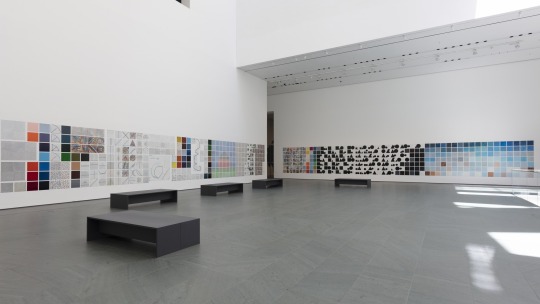

Jennifer Bartlett, Rhapsody (1975)
Beginning in The Comics Journal #303, I write a column called Expanded Comics.
I suggest to see comics as a part of Visual Communication Systems that have existed since the dawn of humanity across every culture, such as Illuminated Manuscripts, Mesoamerican Codices, Bayeux thread, Chinese Lianhua, Dongba symbols, pictograms, infographics, artist books, serial paintings, paintings and drawings with words, multi-screen films, picture books, collages, Charlotte Solomon’s Life or Theatre, David Shrigley’s drawings, etc.
Expanded Comics is a comics-centric way of calling these Visual Communication Systems that can be viewed as comics or comics-like objects regardless of the intention of the creator.
Drawing the definitive boundary of comics is arbitrary, artificial, and ultimately impossible because these Visual communication Systems are diverse. For example, Sol LeWitt’s artist books and Jennifer Bartlett’s Rhapsody can be read as comics as I argued.
Moreover, many artists and cartoonists study same questions. For instance, Aidan Koch (Rabbit’s Rebirth and Translation), Lars Arrhenius (A-Z), bpNichols, and Henri Michaux all study the universality of Visual Communication System or Expanded Comics. Besides, comics and other visual arts are produced, distributed, and received by the same people more and more.
The goal of Expanded Comics is to diversify the production, distribution, reception, and discourse of comics and to highlight the potential of comics’ diversity.
Please read the column for the expanded arguments.
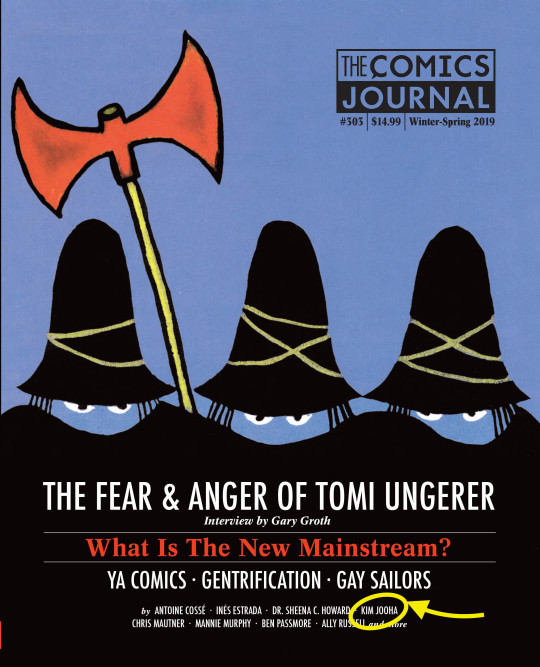
18 notes
·
View notes
Text
Talco Ilgi [Talco Diary] and the New Korean Feminist Movement
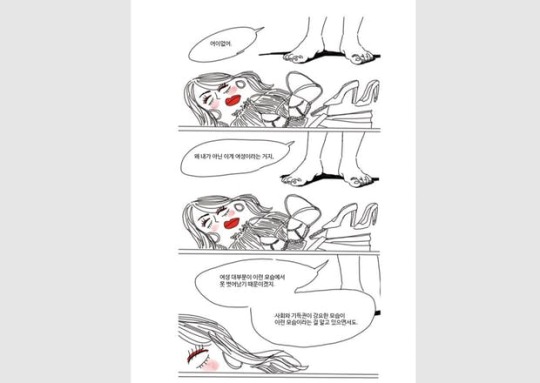
Talco Ilgi [Talco Diary] depicts a South Korean woman rebelling against the strict standard of female beauty in South Korea by shaving her hair and refusing to wear “girl clothes” and the misogynist society against her. “Tal-co”, an abbreviation of Tal-corset [Escaping the corset], is such act of contemporary South Korean feminist movement.
While being the most educated in the world, South Korean women suffer the enormous sexism. South Korea is most misogynic country among industrially developed country (its neighbor Japan is the next). Its gender pay gap is the biggest, violence against women is the most common, and political power of women is the least among OECD countries. Abortion is illegal. Spy-cam is everywhere, especially in public washrooms. Just as its K-beauty and K-pop are enormously popular worldwide (especially in Asia), its impossible beauty standard is enforced to women. If you do not fit the specific female beauty standard, you are ugly and thus you cannot get a job. You need to get plastic surgeries to get a job, only to get fired after pregnancy.
For the last few years, similar to the West, South Korea saw the reemergence of the feminist movement mostly through social media. Because comics, especially webcomics (called Webtoon), are one of the most popular entertainment in South Korea, the new feminist movement influences many artists and audiences. Sadly mainstream publishers (Line, Kakao, or Lezhin) are male-centric and slow to adapt to social change, but thanks to the development of the crowd-funding tools like Kickstarter, influential and popular feminist-themed comics by women artists can make money. The Talco Diary crowd-funder reached 150K USD only about a week after the launch and became the most funded project ever.
South Korean misogyny is deep and systemic. However, our passion for equality is only stronger.
Originally on Your Chicken Enemy for the Best Comics of 2018
Articles on “Tal-co” and the new Korean feminist movement.
'Escape the corset': South Korean women rebel against strict beauty standards. The Guardian
South Korea Loves Plastic Surgery and Makeup. Some Women Want to Change That. The New York Times
South Korean Women v the Patriarchy. The Economist
Why women in South Korea are cutting ‘the corset’. BBC News
Why a new generation of women are challenging South Korea's beauty standards. i-D Vice
Korean Women Are Destroying Their Make-Up To Protest the Unpaid Labor of Beauty. Quartzy
65 notes
·
View notes
Link

I argued that:
Exploiting the form and the mechanism of comics, Conor Stechschulte interrogates the most rooted assumption of comics reading in Christmas in Prison.
Christmas in Prison asks if the narrative of comics is an illusion that the voyeuristic reader looks for and carves out of manufactured memories of discrete images. An illusion which is a dream.
The disturbing feeling that occurs after the reading Christmas in Prison is both from confronting the truth of our voyeuristic desire and a yearning for the illusion of comics narrative.
10 notes
·
View notes
Text
Aidan Koch’s Window at Tangier (2013) in Korean

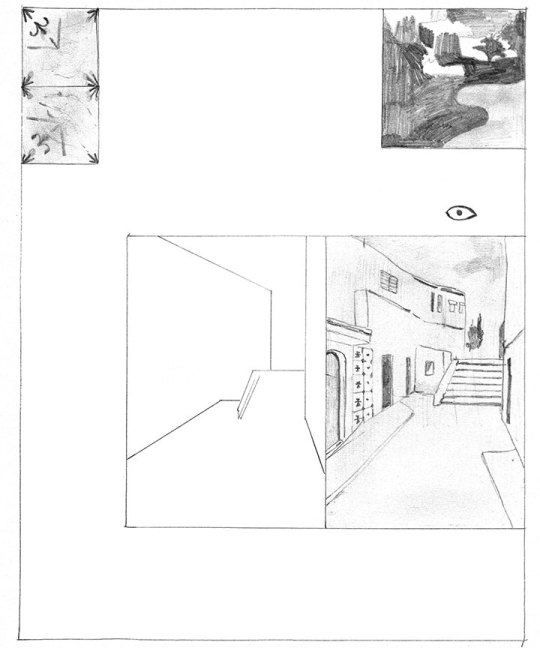
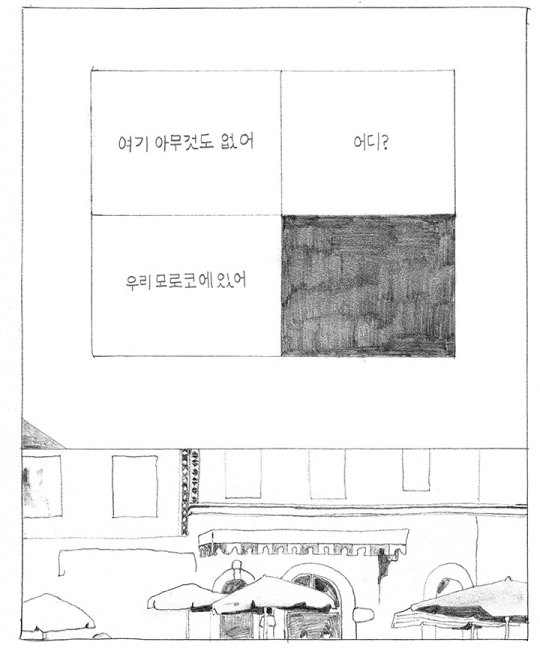
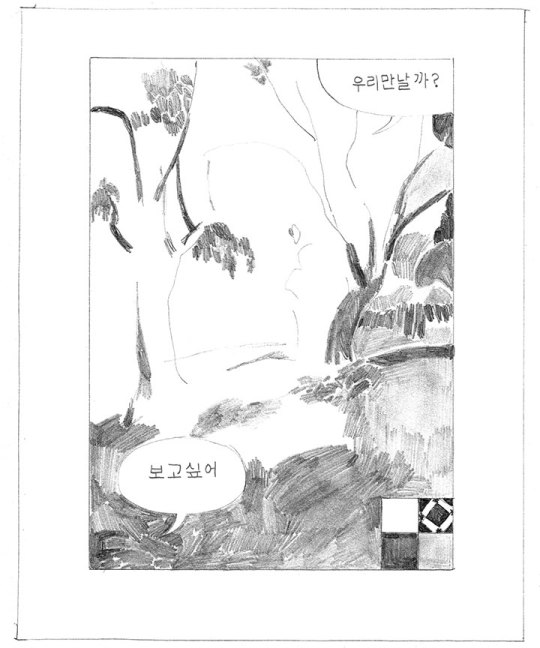
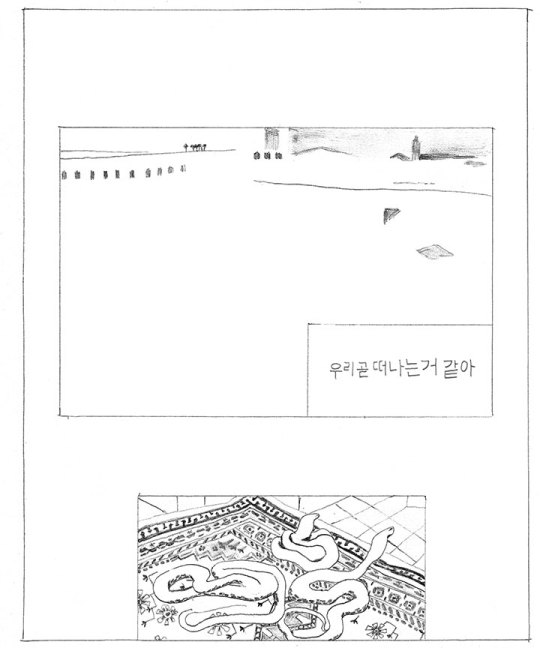
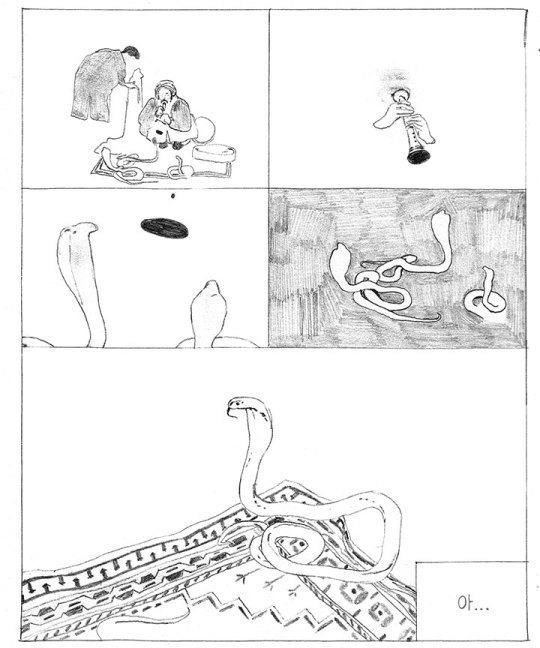
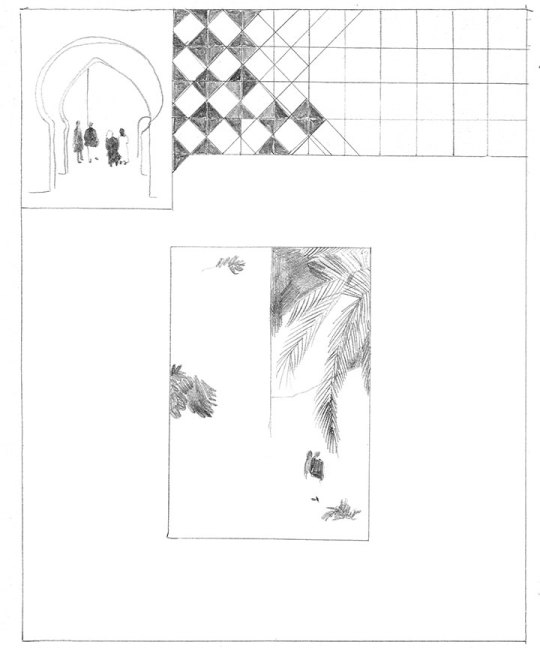

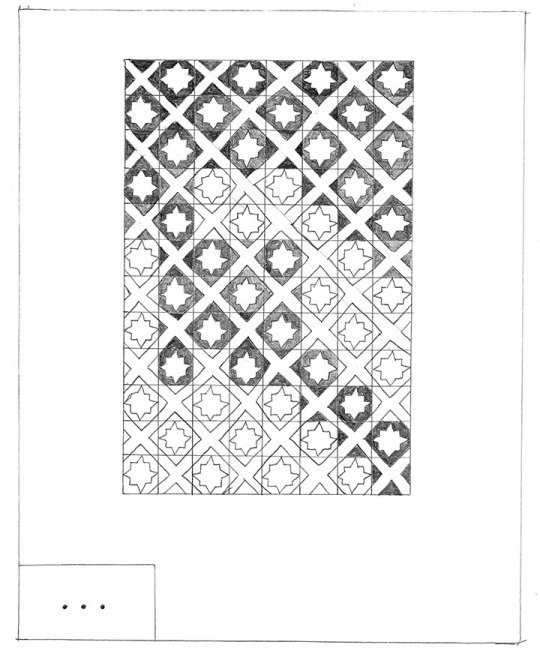

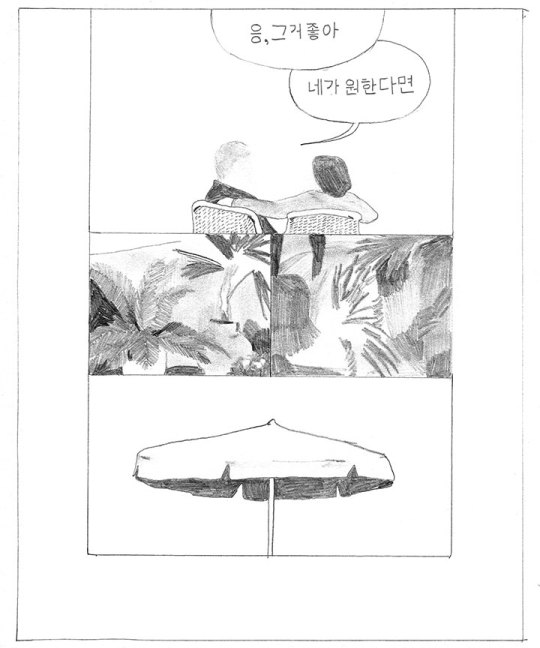

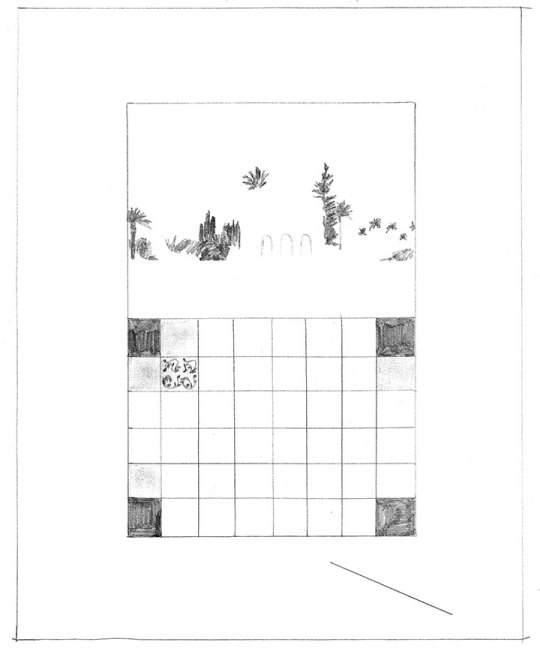
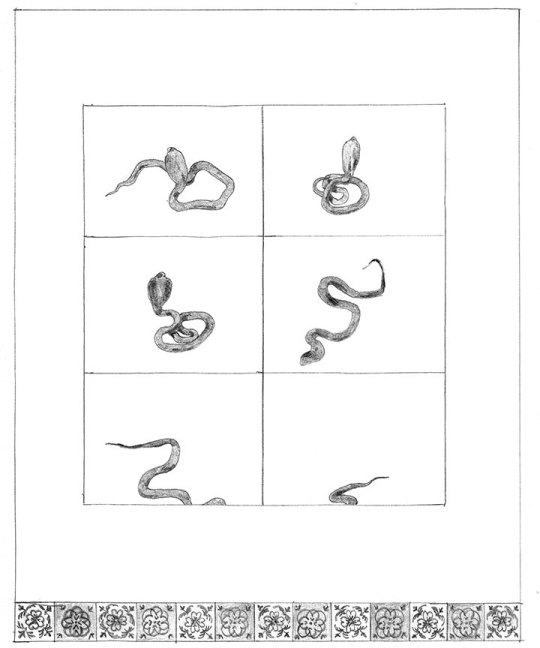
Aidan Koch kindly re-lettered Window at Tangier (originally on Koch’s website) in Korean for Your Mana. Translated by yours truly.
507 notes
·
View notes